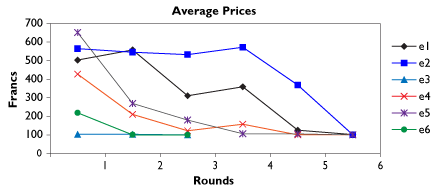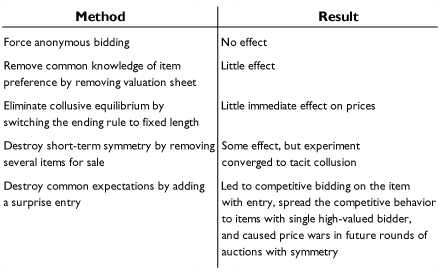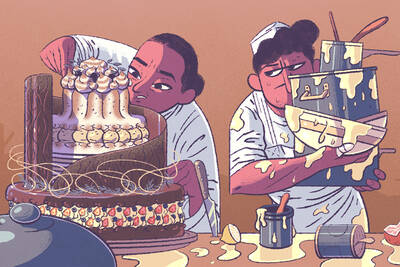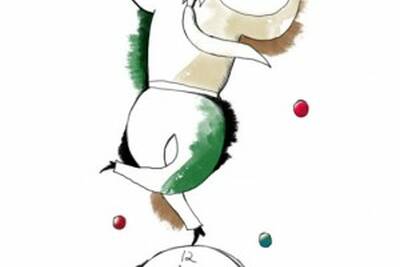At an auction with many bidders, it is generally believed that bidders will behave competitively. It is assumed that competition is the best way to maximize the price received. Now, research by Jin Li, an assistant professor of management and strategy at the Kellogg School of Management, has shown that in some circumstances, bidders engage in collusive strategies that enable them to get a bargain price—perhaps a price even lower than what the item is worth.
Li says that even when bidders do not verbally communicate, they may be able to use information about each other to coordinate mutually beneficial strategies. Li explains, “I may know that you like item A more and I like item B more. I don’t want to compete head-to-head with you on the item you want, and you don’t want to compete head-to-head with me on the item I want. So I’m going to just bid $1 or even $0 on item A and let you win. Conversely, you are going to bid $1 or $0 on item B and let me win.”
Such a strategy may already have been used in the high-stakes Federal Communications Commissions (FCC) spectrum auctions. Since 1994 the FCC has auctioned licenses to companies that want to broadcast on the electromagnetic spectrum. According to the FCC, auctions have dropped the average time from initial application to license grant to less than one year. The public, they say, is now receiving the direct financial benefit from the award of licenses. But Li notes that if firms tacitly collude during these auctions by bidding on the licenses they want the most and not bidding on the others, then auctions will generate very little money for the government. Indeed, The Economist reported that in one set of FCC auctions a company won four separate licenses for just $1 each. “The value of these options is clearly more than that,” Li says.
Even so, tacit collusion among several agents has not been convincingly documented in a natural setting, and it has not been produced in an experimental setting in the absence of a conspiracy or other facilitating condition. Furthermore, although economic theories suggest that tacit collusion can arise, they also suggest that many other outcomes, including competitive bidding, may result. Little is known about the conditions under which collusion is more likely to arise.
The “Collusion Incubator”
To determine how tacit collusion arises in auctions and how to stop it, Li worked with Charles Plott of the California Institute of Technology to create an experimental environment that functioned as a “collusion incubator.” Each experiment had eight subjects, numbered anonymously, who bid on eight items. The bidding took place simultaneously. Each subject was assigned valuations for each item, ranging from 50 to 900 francs, with the reservation price of 100 francs each. After the experiment each franc could be exchanged for one cent. The key feature of the experiment was that every bidder had a favorite item, and no two bidders shared the same favorite item. To facilitate comparisons, the valuations were kept identical across experiments, but within each experiment, the valuations differed from round to round. The subject’s payoff or loss was calculated as the difference between the items’ valuations and the winning bid price. If the subject won an item below its valuation, they profited. Conversely, if the winning price exceeded the valuation, they incurred a loss. Li and Plott knew tacit collusion had arisen if every item was sold at the reservation price (100 francs).
In the initial stages of the experiments, the subjects had extensive knowledge about their situation, including the valuation of each item assigned to each subject and who had bid what price on which item. In most cases, the participants did not know what the total number of rounds would be.
Li and Plott found that subjects started with different views about how to play the game. “Some bidders immediately figured out that they would like to collude, that they could make the most money that way,” Li says. “Other bidders didn’t realize that. They started out bidding very competitively. However, eventually they turned to tacit collusion.”
Once tacit collusion was reached, the average price paid per item went down (Figure 1), the number of bids decreased, and the auction duration shortened. “If people collude with each other, then they make a lot more money. So eventually people will figure out the equilibrium that maximizes their payoff,” Li says. In their paper published in Economic Inquiry, he and Plott report that tacit collusion evolved naturally, “without conspiracy and without intervention or encouragement by the experimenter and without any special facilitating device.”

A Winding Road
How bidders arrive at tacit collusion can be complicated. In some experiments, it is reached quickly. In other experiments, the road toward tacit collusion is more arduous. For example, in one of the experiments a price war broke out between a “collusive” subject and one who had not yet adopted a collusive strategy. During the price war, the collusive subject bid on an item at a price that exceeded his own valuation. Li explains that this behavior was used to send a message to the subject who was not cooperating. “The competitive bidder observes the seemingly irrational behavior of the bidder who instigates the price war, behavior that seems to be against his own self-interest, and thinks, ‘That is really weird, no one should be doing that,’ ” Li says. “However, it eventually serves as a message that there could be better ways to play the game—other strategies that the bidders can use. So eventually everyone will transition into tacit collusion.” And that is exactly what happened in the experiment. In the round after the price war, the previously competitive subject adopted a collusive strategy.
After tacit collusion was established in each experiment, Plott and Li created a “competition-conducive environment” in order to study the stability of tacit collusion (see Table 1 for the modifications that were used to try to disrupt the collusive bidding). They added a surprise competitive entry that was somewhat effective—it made convergence back toward collusive equilibrium difficult. But in general, tacit collusion remained entrenched. “In the natural world, once these firms start to figure out how to play the game—that is, how to tacitly collude—it’s very hard to break,” Li says. He and Plott write that tacit collusion “appears to be held in place by a pure system of belief as opposed to institutions and information that enable the maintenance of a Perfect Bayesian Equilibrium.”

Li notes that in a follow-up experiment, Plott and colleagues discovered that the tacit collusion established in the collusion incubator could be broken using the “Dutch auction,” a format used in the Netherlands for selling flowers. In this system, the price goes down instead of up as the bidding proceeds. The auction ends whenever someone says, “I want it at this price.”
“In designing auctions, people should be very careful about collusion,” Li concludes. “Institutional design is very important to human behavior.”
Further Reading
Brown, Alexander L., Charles R. Plott, and Heidi J. Sullivan. 2009. “Collusion facilitating and collusion breaking power of simultaneous ascending and descending price auctions.” Economic Inquiry, 47(3): 395–424.
Li, Jin and Charles R. Plott. 2009. “Tacit collusion in auctions and conditions for its facilitation and prevention: equilibrium selection in laboratory experimental markets.” Economic Inquiry. 47(3): 425-448.


